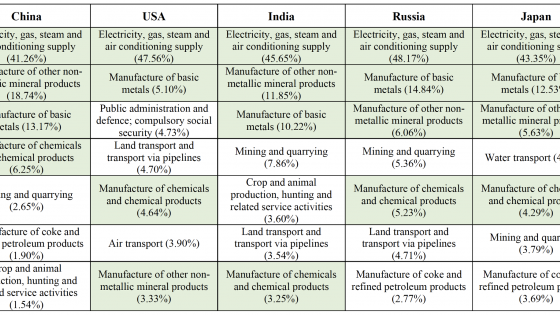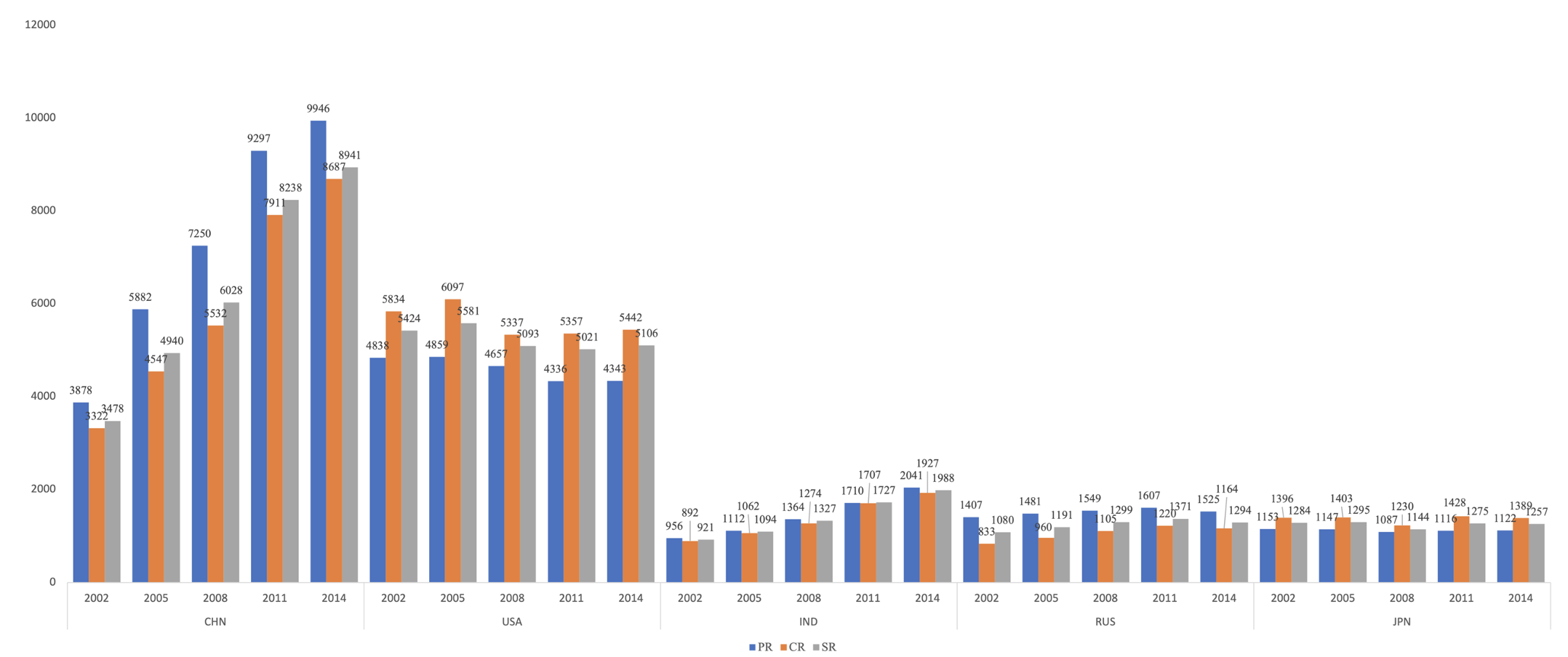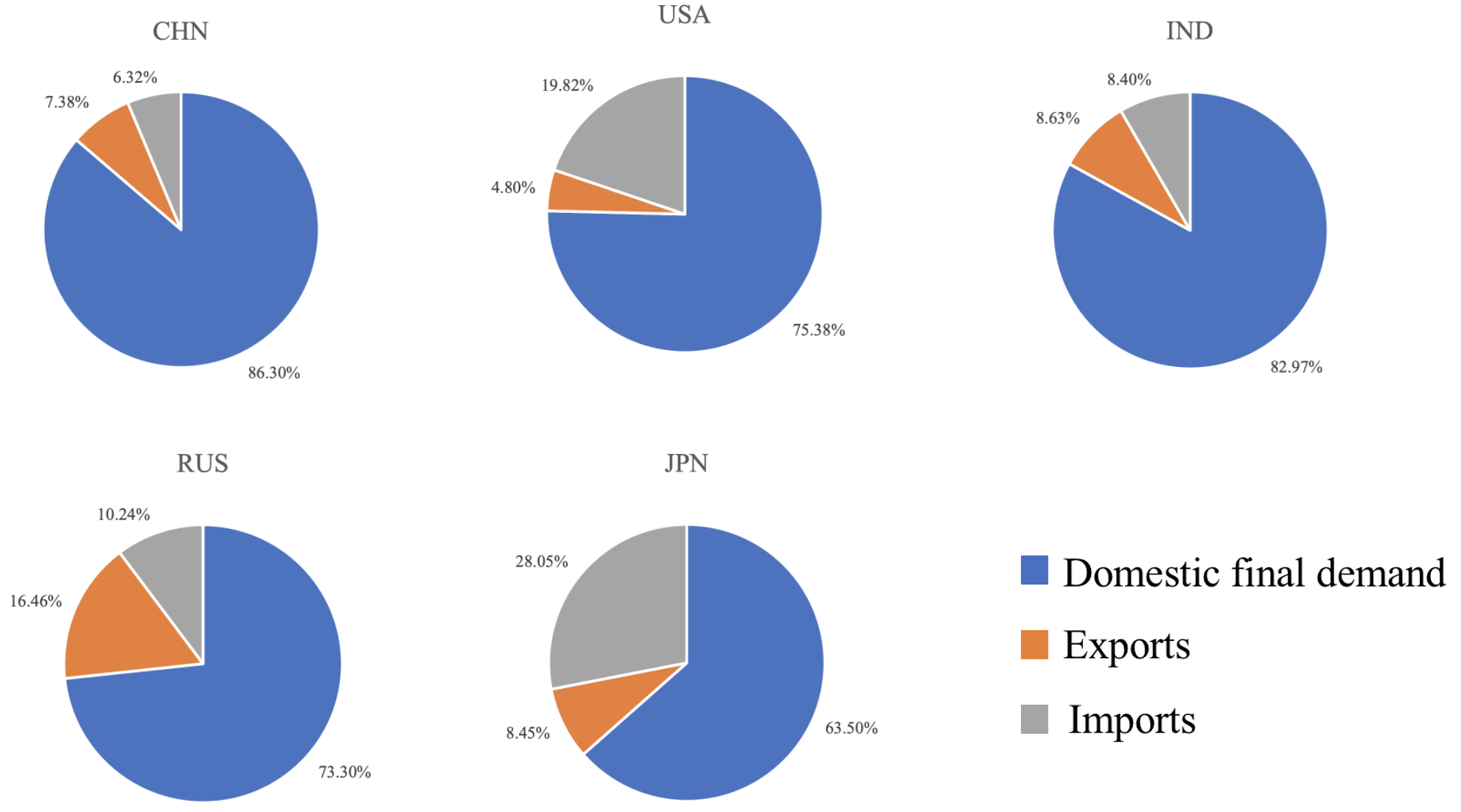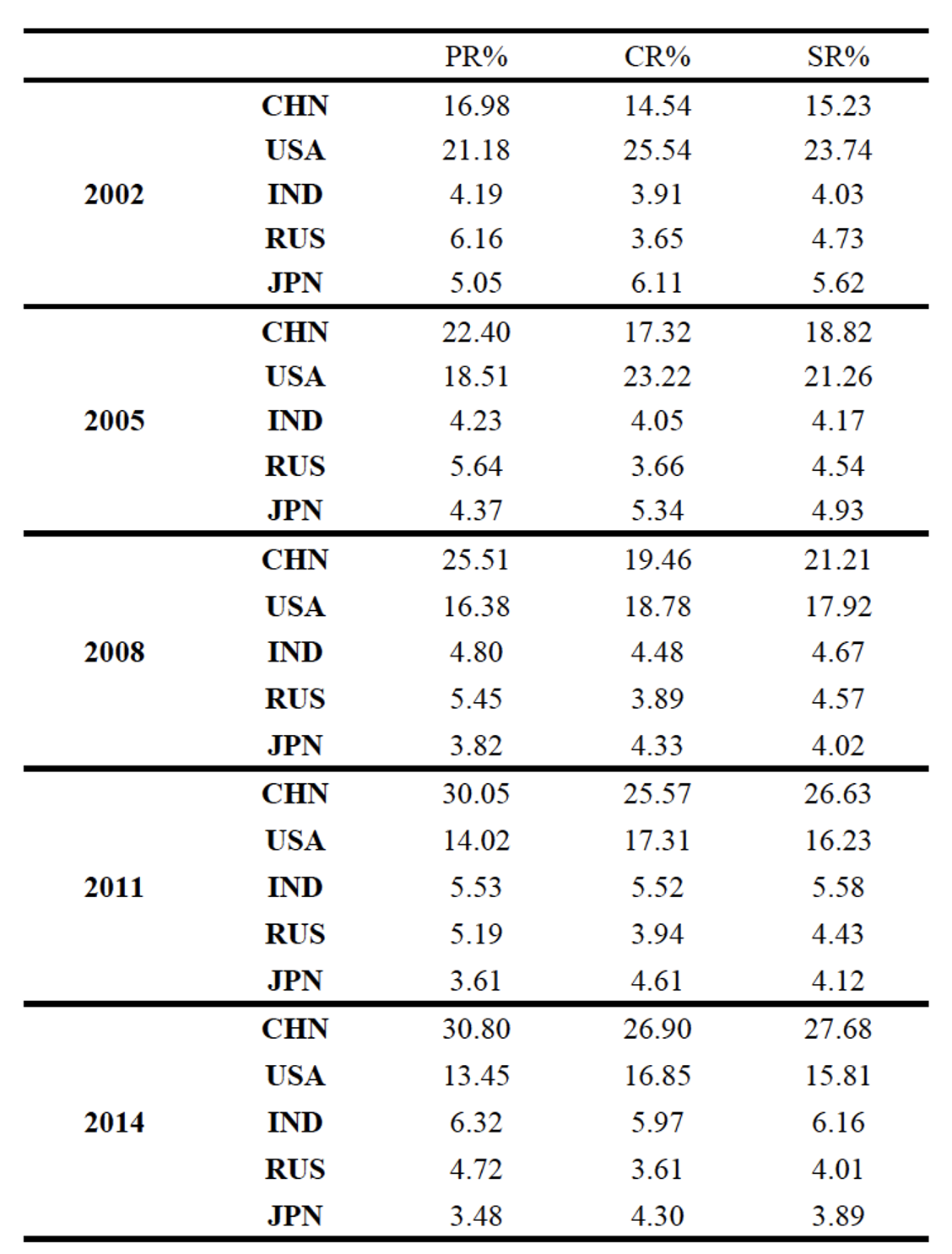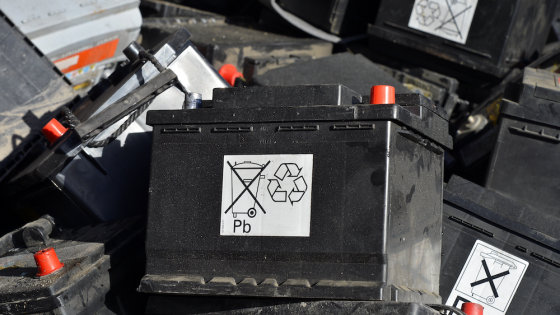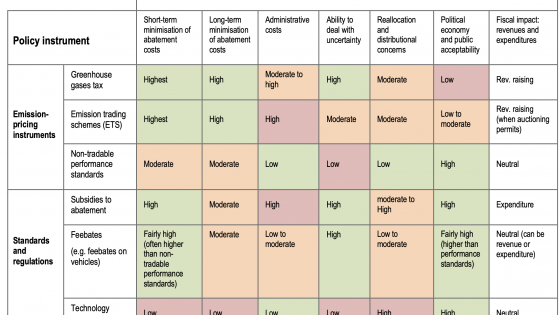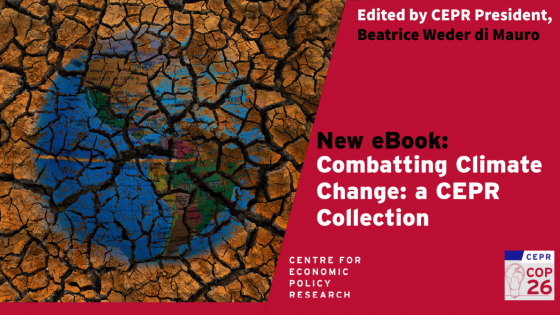The Conference of the Parties (COP) to the United Nations Framework Convention on Climate Change has been held every year since 1995, initiated by the framework of the same name, originally established in 1992. Under the Kyoto Protocol adopted at COP3 in 1997 and the Paris Agreement adopted at COP21 in 2015, participating countries set emission reduction targets. For example, under the Paris Agreement, Japan aims to reduce emissions by 46% compared to 2013 by 2030 and to achieve carbon neutrality by 2050. These emission reductions concern only emissions in Japan so that, for example, emissions by Japanese firms overseas are not counted.
A criticism of the precise specification of these reduction targets is that developed countries are transferring emissions from domestic sources to emerging and developing countries to fulfil the stated objectives concerning their own emission reductions. Some researchers therefore recommend that a ‘consumer responsibility’ (CR) standard be established, which would measure emissions from the consumer's point of view, rather than the conventional ‘producer responsibility’ (PR) standard, which measures emissions from the producer's point of view (Eder and Narodoslawsky 1999, Ahmad and Wyckoff 2003, Bastianoni et al. 2004, Andrew and Forgie 2008, Peters and Hertwich 2008, Davis and Caldeira 2010). However, a CR standard would not be without issues. Under this standard, exporting firms have limited incentives for emissions reductions in producing countries, given the consumers of their goods are located elsewhere and, for the importer, it is difficult to limit emissions from firm production overseas. To address these challenges, a hybrid method that combines the PR and CR measures, known as a ‘shared responsibility’ (SR) standard, has been devised which measures emissions from both the perspectives of producers and consumers (Ferng 2003, Bastianoni et al. 2004, Gallego and Lenzen 2005, Wiedmann and Lenzen 2006, Lenzen et al. 2007, Peters 2008, Cadarso et al. 2012, Zhu et al. 2018, Piñero et al. 2019, Xu et al. 2021). Loosely speaking, the SR standard is a weighted average of the PR and CR standards. Therefore, the method used for determining the weighting of CO2 emissions generated by producers and consumers respectively is important. The existing literature offers many different approaches including setting the weights exogenously (e.g. 50% each) or deriving the weights endogenously.
In our study (Airebule et al. 2021), we derive and analyse the emissions measured by the SR standard of the five countries with the highest carbon emissions in the world (China, the United States, India, Russia, and Japan), both at the national level and 56 sector levels. We begin by using the input-output table which has been previously established in the literature. In this specification, the weight of the weighted average is proportional to the added value. We then adopt a novel, more realistic derivation, which diverges from previous studies and which uses the multi-regional input-output model (MRIO). To do so, we use data from the World Input-Output Database (WIOD) released in 2016 and its environmental account.
We analyse the 2002-2014 emissions using the PR, CR, and SR standards of the five countries at the national level (Table 1) and at the sector level, yielding the following results.
1) In China, India and Russia, the emissions measured by the PR standard exceed those measured by the CR standard, and conversely, in the US and Japan, CR-measured emissions exceed the PR-measured emissions (see Figure 1 and Table 1). This is consistent with the patterns of international trade, reflected by the contribution ratio of the three sources (domestic demand, exports, and imports) to the SR-measured emissions of each country (see Figure 2).
Figure 1 Producer, consumer, and shared responsibility for each economy (CO2 million tonnes)
Figure 2 Three components of each country’s shared responsibility in 2014
Table 1 Each economy’s contribution to the global carbon emissions under different principles
2) During the period studied, emissions in China and India increased by 157% and 116%, respectively, when evaluated by the SR criteria (see Figure 1). While, in China, this emission growth is largely driven by overall economic growth, especially its export growth, it is driven by carbon-intensive production technology in India.
3) The main export destinations contributing to China's SR-measured emissions in 2014 are the EU, the US, and Japan, while the EU constitutes a large share of the export destinations contributing to Russia's SR-measured emissions. The main import destinations that contribute to the SR-measured emissions in the US and Japan are the EU, Canada, China, and Mexico; and China, the EU, the US, and South Korea, respectively. This suggests that carbon leakage is occurring in these countries from the US and Japan.
4) Emissions in the “Electricity, gas, steam and air conditioning supply” sector are by far the largest in all five countries, accounting for more than 40% of the SR-measured emissions. The following characteristics are observed in that sector. Production and carbon intensity are high, contributing to emissions. We also see that the contribution of exports is large in China, whereas in the US, the contribution of imports is large. India's carbon intensity is by far the highest among the five countries.
5) The three sectors of “Manufacture of basic metals”, “Manufacture of other non-metallic mineral products”, and “Manufacture of chemicals and chemical products” to “Electricity, gas, steam and air conditioning supply” together generate over 60% of SR-measured emissions in all five countries (see Table 2).
Table 2 Top seven sectors with the largest shared responsibility of each country in 2014
It is important to note that existing studies do not include emissions from household consumption due to the nature of the input-output table. This is also the case in our analysis, which excludes emissions from household consumption. However, including household consumption would have little effect on the main conclusions, other than for the case of the US in which the emission share is relatively high.
Our study raises important questions concerning how to appropriately allocate responsibility for reducing carbon emissions in the future. Our analysis shows that, when emissions are measured by SR standards, the US and Japan need to increase their emission reduction efforts. There may be additional benefits from establishing and disseminating an SR standard. One possible effect is greater transfer of emission-abatement technology from developed countries to developing countries.
Authors’ note: The research on which this column is based first appeared as a Discussion Paper of the Research Institute of Economy, Trade and Industry (RIETI) of Japan.
References
Ahmad, N and A Wyckoff (2003), “Carbon dioxide emissions embodied in international trade of goods”, Organisation for Economic Co-operation and Development.
Airebule, P, H Cheng and J Ishikawa (2021), “Assessing Carbon Emissions Embodied in International Trade Based on Shared Responsibility”, Discussion Paper Series 21-E-099, RIETI.
Andrew, R and V Forgie (2008), “A three-perspective view of greenhouse gas emission responsibilities in New Zealand”, Ecological Economics 68(1-2): 194-204.
Bastianoni, S, F M Pulselli and E Tiezzi (2004), “The problem of assigning responsibility for greenhouse gas emissions”, Ecological Economics 49(3): 253-257.
Cadarso, M Á, L A López, N Gómez and M Á Tobarra (2012), “International trade and shared environmental responsibility by sector. An application to the Spanish economy”, Ecological Economics 83: 221-235.
Davis, S J and K Caldeira (2010), “Consumption-based accounting of CO2 emissions”, Proceedings of the National Academy of Sciences 107(12): 5687-5692.
Eder, P and M Narodoslawsky (1999), “What environmental pressures are a region's industries responsible for? A method of analysis with descriptive indices and input–output models”, Ecological Economics 29(3): 359-374.
Ferng, J J (2003), “Allocating the responsibility of CO2 over-emissions from the perspectives of benefit principle and ecological deficit”, Ecological Economics 46(1): 121-141.
Gallego, B and M Lenzen (2005), “A consistent input–output formulation of shared producer and consumer responsibility”, Economic Systems Research 17(4): 365-391.
Lenzen, M, J Murray, F Sack and T Wiedmann (2007), “Shared producer and consumer responsibility—Theory and practice”, Ecological Economics 61(1): 27-42.
Peters, G P (2008), “From production-based to consumption-based national emission inventories”, Ecological Economics 65(1): 13-23.
Peters, G P and E G Hertwich (2006), “Pollution embodied in trade: The Norwegian case”, Global Environmental Change 16(4): 379-387.
Piñero, P, M Bruckner, H Wieland, E Pongrácz and S Giljum (2019), “The raw material basis of global value chains: allocating environmental responsibility based on value generation”, Economic Systems Research 31(2): 206-227.
Wiedmann, T and M Lenzen (2006), “Sharing Responsibility along Supply Chains-A New Life-Cycle Approach and Software Tool for Triple-Bottom-Line Accounting”, paper presented at the Corporate Responsibility Research Conference, Trinity College Dublin, Ireland.
Xu, X, Q Wang, C Ran and M Mu (2021), “Is burden responsibility more effective? A value-added method for tracing worldwide carbon emissions”, Ecological Economics 181: 106889.
Zhu, Y, Y Shi, J Wu, L Wu and W Xiong (2018), “Exploring the characteristics of CO2 emissions embodied in international trade and the fair share of responsibility”, Ecological Economics 146: 574-587.
